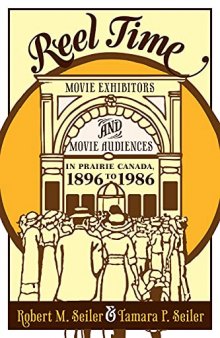 جزییات کتاب
جزییات کتاب
In this authoritative work, Seiler and Seiler argues that theestablishment and development of moviegoing and movie exhibition inPrairie Canada is best understood in the context of changinglate-nineteenth-century and early-twentieth-century social, economic,and technological developments. From the first entrepreneurs whoattempted to lure customers in to movie exhibition halls, to thedigital revolution and its impact on moviegoing, Reel Timehighlights the pivotal role of amusement venues in shaping the leisureactivities of working- and middle-class people across NorthAmerica.As marketing efforts, the lavish interiors of the movie palace andthe romantic view of the local movie theatre concealed a competitiveenvironment in which producers, exhibitors, and distributors tried tomonopolize the industry and drive their rivals out of business. Thepitched battles and power struggles between national movie theatrechains took place at the same time that movie exhibitors launchedcampaigns to reassure moviegoers that theatres were no longer the"unclean and immoral places of amusement" of yesteryear.Under the leadership of impresarios, the movie theatre rose up fromthese attacks to become an important social and cultural centre -one deemed "suitable for women and children."An innovative examination of moviegoing as a social practice andmovie exhibition as a commercial enterprise, Reel Time depictshow the industry shaped the development of the Canadian Prairie Westand propelled the region into the modern era.Robert M. Seiler is associate professor emeritus incommunication and culture at the University of Calgary. TamaraP. Seiler is professor emeritus of Canadian studies at theUniversity of Calgary. Reel Time is their second jointpublication.



 دانلود کتاب
دانلود کتاب

 جزییات کتاب
جزییات کتاب





 این کتاب رو مطالعه کردید؟ نظر شما چیست؟
این کتاب رو مطالعه کردید؟ نظر شما چیست؟
